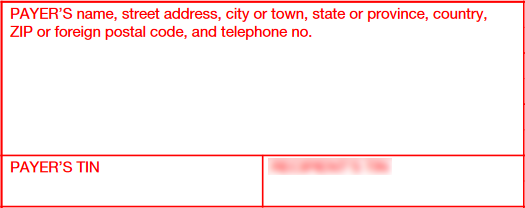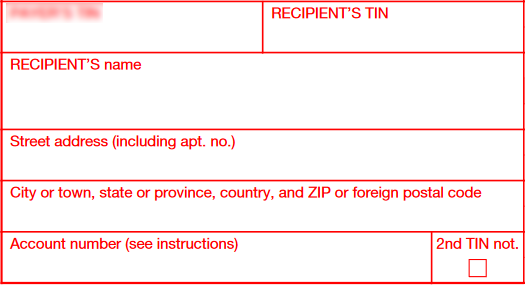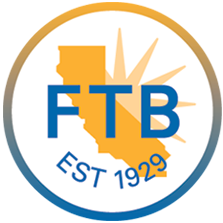Form 1099-PATR Instructions
Excise Tax Forms
Employment Tax Forms
Exempt Org. Forms
Extension Forms
FinCEN BOIR
General
What is IRS Form 1099-PATR?
IRS Form 1099-PATR, "Taxable Distributions Received From Cooperatives, " reports distributions, patronage dividends, or similar payments of $10 or more made by cooperatives to their members. The payer must file this form to notify both the IRS and recipients about taxable income.
Who needs to file Form 1099-PATR?
Any cooperative that pays $10 or more in patronage dividends or other distributions to its members during the tax year must file Form 1099-PATR. This requirement applies to agricultural cooperatives, rural electric cooperatives, and any other type of cooperative that distributes taxable income to its members.
When is the Form 1099-PATR due date?
Payers must be aware of two important deadlines related to Form 1099-PATR:
Filing deadline with the IRS
The deadline for payers to submit Form 1099-PATR to the IRS depends on the filing method:
- Electronic filing deadline: March 31, 2025
If you are e-filing Form 1099-PATR with the IRS, the deadline is March 31st of the year following the tax year for which the form is being issued. - Paper filing deadline: February 28, 2025
If you are filing Form 1099-PATR with the IRS using traditional paper methods, the deadline is February 28th of the year following the tax year for which the form is issued.
Avoid the stress of last-minute 1099-PATR deadlines.
E-file with TaxZerone now and enjoy hassle-free IRS compliance and peace of mind.
Recipient copies deadline: January 31, 2025
Payers must deliver copies of Form 1099-PATR to recipients by January 31st of the year following the relevant tax year. This allows recipients to accurately file their tax returns on time.
Missing these deadlines or providing incorrect information on Form 1099-PATR can lead to IRS penalties. To avoid potential penalties, payers should take steps to ensure that Form 1099-PATR is filed and distributed both accurately and on time.
Form 1099-PATR penalty
If you miss filing Form 1099-PATR within the deadline, the IRS will impose a penalty. Here are the Form 1099-PATR penalty rates:
| Days late | Penalty per return |
|---|---|
| Up to 30 days | $60 |
| 31 days late through August 1 | $130 |
| After August 1 or not filed | $330 |
| Intentional disregard | $660 |
Why risk penalties?
E-file your 1099-PATR forms ahead of the deadline with TaxZerone.
Form 1099-PATR Instructions - How to fill out?
Let's see line-by-line instructions on how to fill out Form 1099-PATR.
Payer details

Enter your name or business name, complete address, and TIN (SSN if you're an individual; EIN if you're a business)
Recipient details

Enter the recipient’s name, complete address, and TIN (SSN for an individual; EIN for a business).
- Account number: You must provide the account number if you have multiple accounts for the same recipient and filing more than one Form 1099-PATR for that recipient.
- 2nd TIN not: If the IRS has notified you two times within the last 3 years that the payee provided an incorrect TIN, you can enter an "X" in this box. By doing so, the IRS will stop sending you further notices about this account's TIN.
Box 1: Patronage Dividends

Enter the member's share of total patronage dividends, including:
- Cash payments
- Qualified checks
- Qualified written notices of allocation (face value)
- Other property
Box 2: Nonpatronage Distributions

This box applies only to farmers' cooperatives exempt from tax under section 521.
Enter the patron's share of distributions from nonpatronage sources, including:
- Earnings from business done with:
- The United States government
- Any U.S. government agency
- Other nonpatronage income allowed as a deduction under section 1382(c)(2)(A)
Include the following types of payments:
- Cash (including qualified or "consent" checks)
- Qualified written notices of allocation (at face value)
- Other property
- Nonqualified written notices of allocation
These distributions must be made on a patronage basis.
Box 3: Per-Unit Retain Allocations

Enter the patron's share of total per-unit retain allocations, including:
- Cash payments
- Qualified per-unit retain certificates (at face value)
- Other property
Do not include:
- Nonqualified per-unit retain certificates
Box 4: Federal Income Tax Withheld

Enter the amount of backup withholding on patronage payments.
Box 5: Redeemed Nonqualified Notices

Enter the total amount of two types of redeemed nonqualified notices:
- Nonqualified written notices of allocation:
- Paid as patronage dividends
- Nonqualified per-unit retain certificates:
- Paid as per-unit retain allocations
Box 6: Section 199A(g) Deduction

This box applies only to specified agricultural and horticultural cooperatives.
Enter the patron's share of the cooperative's section 199A(g) deduction.
Requirements:
- The cooperative must have claimed this deduction under section 199A(g).
- The cooperative must have notified the patron in writing within the payment period specified in section 1382(d).
- The deduction allocated to each patron cannot exceed 9% of the qualified payments reported in box 7.
- Only eligible taxpayers may claim this passed-through deduction.
- C corporations that are not specified agricultural or horticultural cooperatives are not eligible.
Requirements:
- Do not reduce amounts in box 1 or box 3 by the amount reported in box 6.
Box 7: Qualified Payments

Enter the total qualified payments paid to the patron.
Reporting requirement:
- You must report this information regardless of whether you pass any section 199A(g) deduction through to the patrons.
Box 8: Section 199A(a) Qualified Items

Enter amounts reported to patrons that are qualified items from trades or businesses eligible for section 199A deductions.
Eligible items:
- Income, gain, deduction, or loss from qualified trades or businesses
- Must be effectively connected with a U.S. trade or business
- Items from specified service trades or businesses (SSTBs)
Exclude:
- Tax-exempt income
- Capital gains
- Income not effectively connected with a U.S. trade or business
Box 9: Section 199A(a) SSTB Items

Enter amounts reported to patrons that are qualified items from specified service trades or businesses (SSTBs) under section 199A.
SSTB examples:
- Health services
- Legal services
- Accounting services
- Other professional services (see Form 8995-A instructions for a full list)
Important notes:
- Only report SSTB items in this box
- These items are from trades or businesses that would otherwise qualify for section 199A deductions.
Box 10: Investment Credit

Enter the patron’s share of the total investment credit.
Box 11: Work Opportunity Credit

Enter the patron’s share of the total work opportunity credit.
Box 12: Other Credits and Deductions

Select any of the following credits and enter the respective amount in box 12:
- Empowerment zone employment (Form 8844)
- Low sulfur diesel fuel production (Form 8896)
- Small employer health insurance premiums (Form 8941)
- Employer differential wage payments (Form 8932)
- Biodiesel, renewable diesel, or sustainable aviation fuel mixture (Form 8864)
- Capital costs for small refiner cooperatives complying with EPA sulfur regulations
Box 13: Specified Cooperatives

Check this box if you are a specified agricultural or horticultural cooperative.
You are a specified cooperative if:
- Part 1 of subchapter T of chapter 1 of subtitle A of the Code applies to you, and
- You are engaged in either:
- Manufacturing, producing, growing, or extracting agricultural or horticultural products (in whole or significant part), or
- Marketing agricultural or horticultural products.
How to File Form 1099-PATR
You can file Form 1099-PATR, either electronically or by mail.
Electronic Filing (E-filing)
E-filing is the IRS-recommended method due to its efficiency, accuracy, and quick processing notifications.
To e-file Form 1099-PATR, you can use an IRS-authorized e-file service provider, such as TaxZerone. TaxZerone simplifies the e-filing process and allows you to complete it within minutes. Here's how it works:
- Enter the required information, including:
- Payer's name, address, and TIN
- Recipient's name, address, and TIN
- Payment details
- Review all entered information for accuracy.
- Transmit the form securely to the IRS.
- Provide a copy to the recipient.
Paper filing
While less efficient, paper filing remains an option for those who prefer it. Here are the steps for paper filing:
- Download Form 1099-PATR from the official IRS website (www.irs.gov).
- Print the form.
- Complete all required fields using black ink. This includes:
- Payer's information
- Recipient's information
- Payment details
- Make a copy for your records.
- Mail the original form to the IRS address specified in the Form 1099 General Instructions. The address varies based on your state. Refer to the Where to send Form 1099-PATR - Mailing address section to get the address for your state.
- Send a copy to the recipient by February 15th of the year following the reportable transaction.
Important considerations for paper filing
- Mail forms several weeks before the deadline to ensure timely arrival.
- Use certified mail for proof of timely filing.
- Ensure all copies are legible.
Alternatively, you can file Form 1099-PATR electronically for faster processing and delivery, reducing the risk of delays or lost forms.
Where to send Form 1099-PATR - Mailing address
If you prefer paper filing, the mailing address for Form 1099-PATR varies depending on your business location. Below is a table summarizing the mailing address for Form 1099-PATR:
| If your business operates in or your legal residence is… | Mail Form 1099-PATR to… |
|---|---|
| Alabama, Arizona, Arkansas, Delaware, Florida, Georgia, Kentucky, Maine, Massachusetts, Mississippi, New Hampshire, New Jersey, New Mexico, New York, North Carolina, Ohio, Texas, Vermont, Virginia | Internal Revenue Service Austin Submission Processing Center P.O. Box 149213 Austin, TX 78714 |
| Alaska, Colorado, Hawaii, Idaho, Illinois, Indiana, Iowa, Kansas, Michigan, Minnesota, Missouri, Montana, Nebraska, Nevada, North Dakota, Oklahoma, Oregon, South Carolina, South Dakota, Tennessee, Utah, Washington, Wisconsin, Wyoming | Department of the Treasury IRS Submission Processing Center P.O. Box 219256 Kansas City, MO 64121-9256 |
| California, Connecticut, District of Columbia, Louisiana, Maryland, Pennsylvania, Rhode Island, West Virginia | Department of the Treasury IRS Submission Processing Center 1973 North Rulon White Blvd. Ogden, UT 84201 |
| Outside the United States | Internal Revenue Service, Austin Submission Processing Center, P.O. Box 149213, Austin, TX 78714 |
How to E-File Form 1099-PATR with TaxZerone
Before you start e-filing Form 1099-PATR, ensure you have all the necessary information to facilitate a smooth and efficient filing experience. Here’s what you need to gather:
Required information for filing Form 1099-PATR:
- Payer details
- Recipient details
- The total amount of distributions, including patronage dividends, nonpatronage distributions, and any per-unit retain allocations
Steps to e-file Form 1099-PATR using TaxZerone:
Step 1:Complete Form 1099-PATR
Open Form 1099-PATR and fill out the necessary fields with the information you have gathered.
Step 2: Review and transmit the return
Carefully review all the entered information to ensure accuracy. Once verified, transmit the completed Form 1099-PATR to the IRS
Step 3: Provide the recipient copy
After successfully transmitting the form to the IRS, send a copy of the completed Form 1099-PATR to the recipient.
Benefits of E-Filing Form 1099-PATR with TaxZerone
E-filing Form 1099-PATR with TaxZerone offers several advantages:
- IRS Form Validations: TaxZerone's system checks your returns for errors or missing information, ensuring accuracy before submission.
- Email Recipient Copies: Conveniently send recipient copies of Form 1099-PATR via email, eliminating the need for manual mailing.
- Secure Portal Access (ZeroneVault): Recipients can access their return copies anytime, anywhere through the secure ZeroneVault portal.
- Competitive Pricing: TaxZerone offers industry-leading pricing, with rates starting as low as $0.59 per form, making it affordable for businesses of all sizes.
By using TaxZerone's e-filing solution, you can streamline your Form 1099-PATR filing, save time, reduce errors, and provide a better experience for your recipients.




